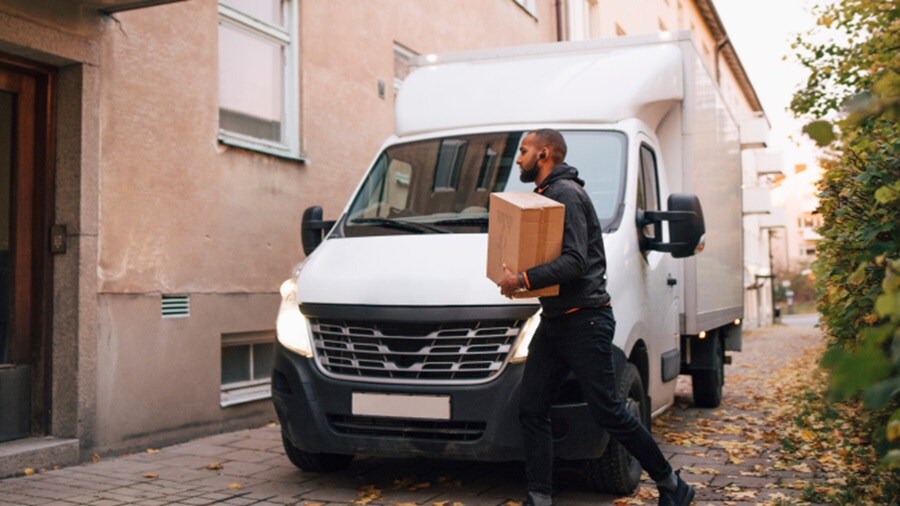If the last five years are anything to go by, predicting logistics trends is extremely difficult. While we can’t be certain of the political, environmental, financial or sociological landscape around the corner, we know enough about consumer trends to guide our planning.

Predictions show e-commerce and omnichannel will continue to grow globally over the next few years, albeit at a slower rate than the astonishing 18.5% jump in worldwide e-commerce sales from 2020 to 2021, much of which can be attributed to pandemic-induced restrictions. With this growth, customer expectations around ease and speed of delivery and returns have increased. And against a backdrop of the growing cost of living crisis, this means people are less loyal to brands and more driven by price, availability and convenience.
Meeting these demands takes a resilient, intelligent and, most of all, agile supply chain.
So, what are the practical steps businesses can take to create a supply chain that’s flexible enough to live up to customer expectations, both now and in the future?
Keep your inventory closer to your customers
According to Sendcloud, on average, European consumers expect to receive their orders within three days of purchasing, and over one-third don’t want to pay extra for delivery. Moving your inventory to fulfilment warehouses closer to your customers means you can offer deliveries faster and respond to unexpected demand more effectively. Getting your electric fans to customers in Germany when a heatwave is forecast there, for example, is easier if you already have warehouse capacity close at hand.
But while the theory of moving closer to customers is sound, it comes with its own set of challenges. As you move closer to more densely packed urban areas, space optimisation becomes a big question in your warehousing decisions, and tech investment in those spaces becomes crucial too. Also, you need to weigh up the longevity of trends. For instance, what happens if next month your products are suddenly selling better on the other side of the world? There’ll always be a need to assess the cost and benefit implications before you make a decision of this kind.

Make the last mile one of your first priorities
Last-mile deliveries account for more than 53% of total shipping costs. With customers expecting value for money, driving last-mile efficiencies is one way to unlock vital margins. The question is, how?
You need to be able to switch your last-mile carrier to avoid delays, extra costs and lack of real-time visibility or to overcome any events beyond your control.
Looking forward, last-mile innovations using drones, robots and self-drive vehicles are expected to further reduce costs and speed up deliveries. But while all these are currently in operation in test markets, regulation, cost and public acceptance are likely to hamper their growth (and, therefore, effectiveness) in the short to medium term.

Update your supply chain management software
Gartner suggests that digital transformation in the supply chain can lead to a 20% increase in revenue and a 50% reduction in process costs. The latest digital tools can increase agility and efficiency in your supply chain at a time when traditional methods are fast becoming obsolete.
At-capacity warehouses, slow-moving stock, disconnected and siloed partners and lack of end-to-end visibility should be all the incentive you need to decide to overhaul your software.
This would enable you to take advantage of integrated supply chain digitalisation and the latest data analytic capabilities.
A modern inventory management system would also make you capable of supporting the long-term success of flexible shopping models such as 'Buy Online, Pick up In-Store’ (BOPIS) or ‘Buy Online, Return In-Store’ (BORIS).
Make returns simpler
With the high level of product returns in e-commerce retailing, you now need the flexibility to bring products back as well as send them out. While it’s easy to see this as an unwelcome cost for you to shoulder, you could also view it as a genuine business opportunity
92% of consumers surveyed said they’ll use the same retailer again if product returns are easy. A quick and easy returns process will boost customer loyalty and increase sales. To drive the conversation with the C-suite, it’s worth knowing that 46% of worldwide consumers would use home pickup for e-commerce returns if available and offering free returns can boost sales on high-ticket items by 17%.

An agile supply chain requires an agile workforce
As the talent gap continues to widen, finding the quality of employees you need to drive your business forward is becoming increasingly hard. These days, to attract the best people and keep them, you need to offer flexible working opportunities.
While the hybrid model has already become the norm for many, it’s more complicated, naturally, for e-commerce retailers who require their employees to be physically present.
However, that doesn’t mean flexibility is out of the question: it might just need to take a different form.
One such opportunity is to differentiate from competitors by allowing employees more autonomy and choice about the hours they work. In fact, those that don’t offer this may already be at greater risk. According to a global survey by Boston Consulting Group, 50% of deskless workers cite a lack of flexibility or work-life balance as the reason for considering leaving their jobs. However, by providing some flexibility over shift patterns, e-commerce retailers can give employees more reason to stay.
Find out more about future-proofing your supply chain
Increasing agility is just one of the demands on e-commerce retailers striving to future-proof their business. Advances are needed in other areas too, such as demand forecasting, scalability and decarbonisation.
The practical steps outlined in this article might seem daunting or too expensive. However, at Maersk, our integrated logistics offerings and carrier-agnostic logistics capabilities are already set up and ready to use, which makes the transition smoother and more manageable. If you’re ready to talk about taking these steps, click here, and one of our experts will call you.
无论您需要什么,我们都可以随时为您提供帮助
I agree to receive logistics related news and marketing updates by email, phone, messaging services (e.g. WhatsApp) and other digital platforms, including but not limited to social media (e.g., LinkedIn) from A. P. Moller-Maersk and its affiliated companies (see latest company overview). I understand that I can opt out of such Maersk communications at any time by clicking the unsubscribe link. To see how we use your personal data, please read our Privacy Notification.
By completing this form, you confirm that you agree to the use of your personal data by Maersk as described in our Privacy Notification.
